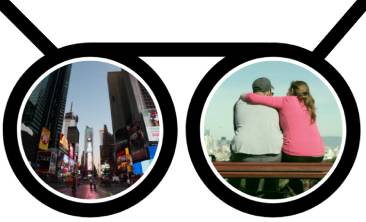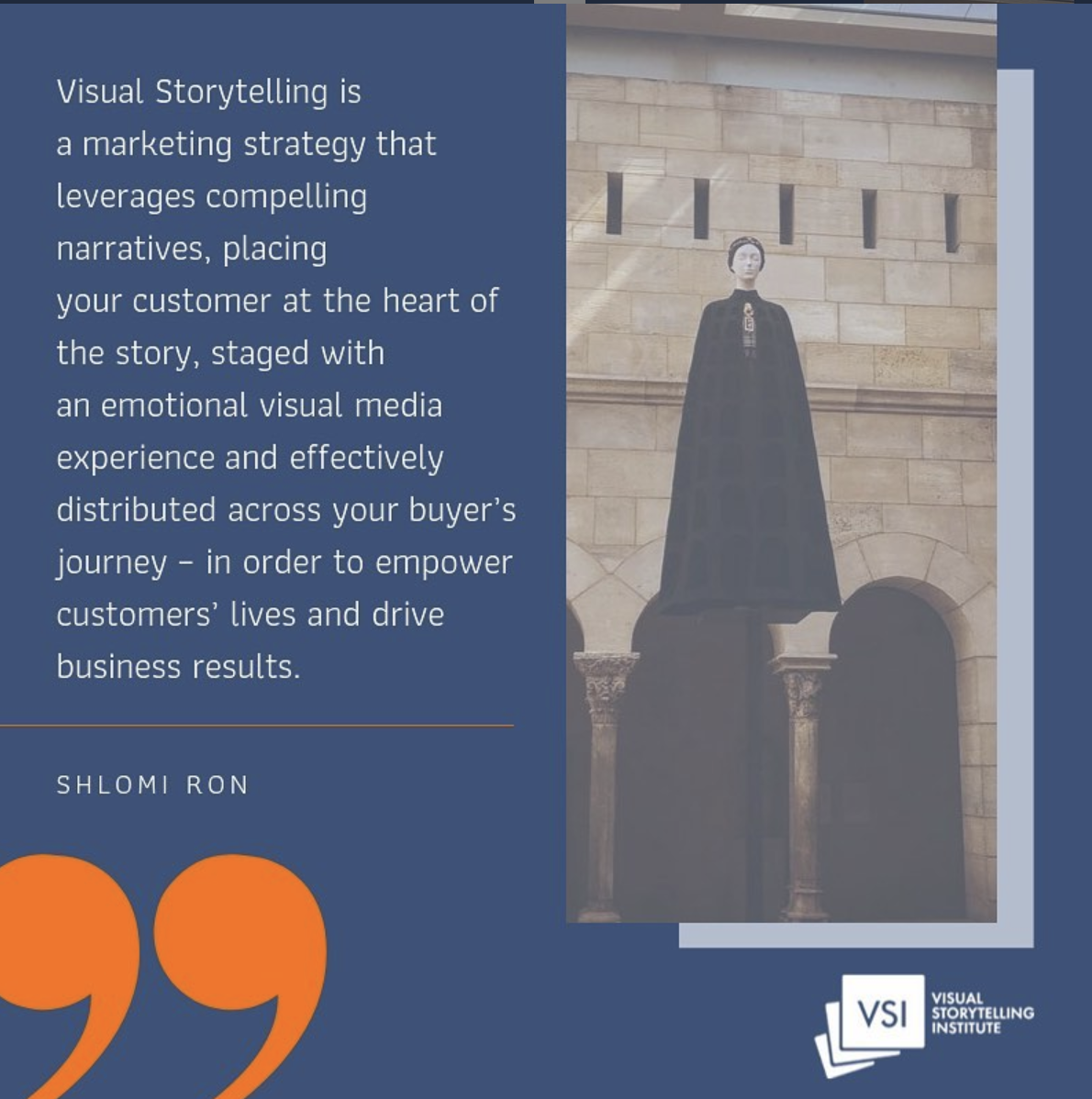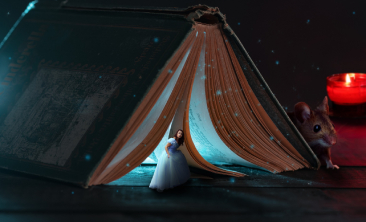
Are You Creating Ads or Visual Stories?
Are You Creating Ads or Visual Stories? https://www.visualstorytell.com/wp-content/uploads/2021/06/Are-you-creating-ads-or-visual-stories.jpg 366 222 Shlomi Ron Shlomi Ron https://secure.gravatar.com/avatar/995c0cf093380b90c7704fda398c9addf4e5c605afbc92af5c3f01f67d65aa41?s=96&d=mm&r=g- Shlomi Ron
- no comments
Are you creating ads or visual stories?
Through your customer’s eyes each carries a complete different experience.
For context, let’s look at my back story
I typically start my talks and workshops by sharing the back story behind starting the Visual Storytelling Institute.
I always start off by saying:
“Pay attention to your side hustles. Sometimes that’s where your BIG STORY is waiting!”
That’s at least what happened in my case.
For over 20 years, I worked in various digital marketing roles on the agency and largely on the brand side, with Fortune 100/500 brands such as IBM, Nokia, and American Express.
All along, I was nursing my side passion for visual stories with interests in classic Italian cinema, stemming from taking Italian language classes fore over 10 years.
I wrote film reviews on my blog – cafePellicola.com – and ran film festivals where I would curate the films and run post-screening Q&A sessions.
Mind you, I have no family connection to Italy. That was a pure passion project to see the world through fresh “cultural lenses.”
This interest has trained my mind to appreciate the wonders of cinematic storytelling, intriguing characters and those timeless soundtracks.
The other influence was video art.
My father in-law is Buky Schwartz, one of the early video art pioneers. His seminal pieces are shown in private and public collections such as the Whitney, Guggenheim, and the Smithsonian museums.
Since he passed away in 2009, I’ve been working to spread his legacy working with museums, galleries, and collectors.
Along my journey, I kept wondering: How can businesses rise above the growing information overload – that costs the US economy over $900 billion a year in lost productivity – riding on such elusive attention spans?
Therefore, when I moved to Miami about five years ago, I figured it’s time to combine my marketing background, and my passion for visual stories.
I initially started a business around interactive social media walls – after a successful experience in a previous job – that didn’t quite get traction.
What was my call to adventure?
So, I figured I need a new angle.
That’s why I started the Visual Storytelling Institute – the primary think tank that brings the gospel of visual storytelling from the world of art into marketing.
I remember I searched for “visual storytelling” to get a general idea of
the lay of the land.
I typically found references to graphic design, photography and filmmaking. There was nothing real in terms of visual storytelling in the context of marketing.
And so I came up with my own definition for visual storytelling marketers can actually work with.
From interruption to empowerment marketing
You see, after the long reign of what is known as “Interruption Marketing,” those banners and ads that place the brand in the center and push hard for the sale – people got tired of being sold to.
Just think how anxious you feel during those 4 seconds to pass before you can click on that Skip Ads button on pre-roll YouTube video ads.
Add to that the rising communication noise that made it much harder to for brands to connect with their audiences.
It was no longer a one-to many but more many-to-many communication landscape.
Just look at the past 20 years with the adoption of broadband, social media and mobile, consumers now have the same megaphones as brands to create content that in many cases is much more meaningful.
So brands have quickly realized that to compete with the noise and reach out to a new generation of audiences that can smell BS a mile away, they need to switch strategy.
Marketers started to look next door at how Hollywood was engaging audiences for eons with their films.
That’s when marketers found ways to adopt storytelling models such as Joseph Cambell’s Hero’s Journey, Freytag’s pyramid and others – into their marketing strategy.
This is where you start seeing examples of a new “Marketing Empowerment” movement where brands place the customer in the center and use a visual engaging story to emotionally connect with their audiences.
Telling a laundry list of speeds and feeds about how great your product is, won’t fly these days.
Instead, audiences expect more showing vs. telling – about their problems and concerns.
Think of all the great stories that show audiences’ challenges, high stakes, emotional empathy, and a bunch of downsides to make the story credible to their real-life experiences.
Consider two examples from Apple:
Exhibit A: Ad
Exhibit B: Visual story
Unlike the first example from Apple, the second, feels like a short film; people can easily see themselves in the story, especially the theme of working remotely during the pandemic.
Do you see the difference?
When you tell a compelling visual story, it won’t feel like an ad. Your audience will experience it as if it were a type of entertainment content.
If you also include a dash of imperfection in your story it would also create an intimacy and trust-building with your audience.
Think of it the same way you exchange stories with your best friend.
I know what you’re thinking
You’re right! In the case of Apple with its gigantic brand equity, customers can relate to an iPad ad, as they complete the stories in their minds.
Say you already the happy iPad user, then this ad about the new model would work as a reminder to check it out.
I bet this type of ad for a new brand wouldn’t move you as much.
In short
The way I see it, ads work as repetitive reminders, whereas visual stories work as emotional persuaders.
It’s all about finding the right balance, and calibrate your content to the right purpose, right buyer, at the right time and right platform.
Naturally, your visual stories will change as your customer moves along different stages of the buyer’s journey. But I’ll keep this one for another day.
What visual stories are you creating to emotionally move your audience? Feel free to share your experiences in the comments below.
Need help developing your brand’s visual storytelling strategy? Let’s chat!
- Post Tags:
- visual story
- visual story vs. ad
- Posted In:
- Design
- Story Visualizing
- Videos
- Visual Storytelling
Shlomi Ron
Shlomi Ron is the founder and CEO of the Visual Storytelling Institute, a Miami-based think tank with a mission to bring the gospel of visual storytelling from the world of art to more human-centric and purpose-driven marketing. A digital marketing veteran with over 20 years of experience working both on the agency and brand sides for Fortune 100/500 brands such as Nokia, IBM, and American Express. He started VSI to combine his marketing expertise with his passion for visual stories stemming from his interests in classic Italian cinema and managing the estate of video art pioneer, Buky Schwartz. At VSI, he helps brands rise above the communication noise through visual storytelling consulting, training, and thought leadership. Select clients include Estée Lauder, Microsoft, and Cable & Wireless – to name a few. He currently teaches Brand Storytelling at the University of Miami’s Business School. Thought leader and speaker at key marketing conferences. He is also the host of the Visual Storytelling Today podcast, which ranks in the top 10 best business storytelling podcasts on the Web. His book: Total Acuity: Tales with Marketing Morals to Help You Create Richer Visual Brand Stories. Outside work, he is a nascent bread baker, The Moth fan, and longtime fedora wearer likely to jive with his classic Italian cinema interest.
All stories by: Shlomi RonYou might also like
This site uses Akismet to reduce spam. Learn how your comment data is processed.




Leave a Reply